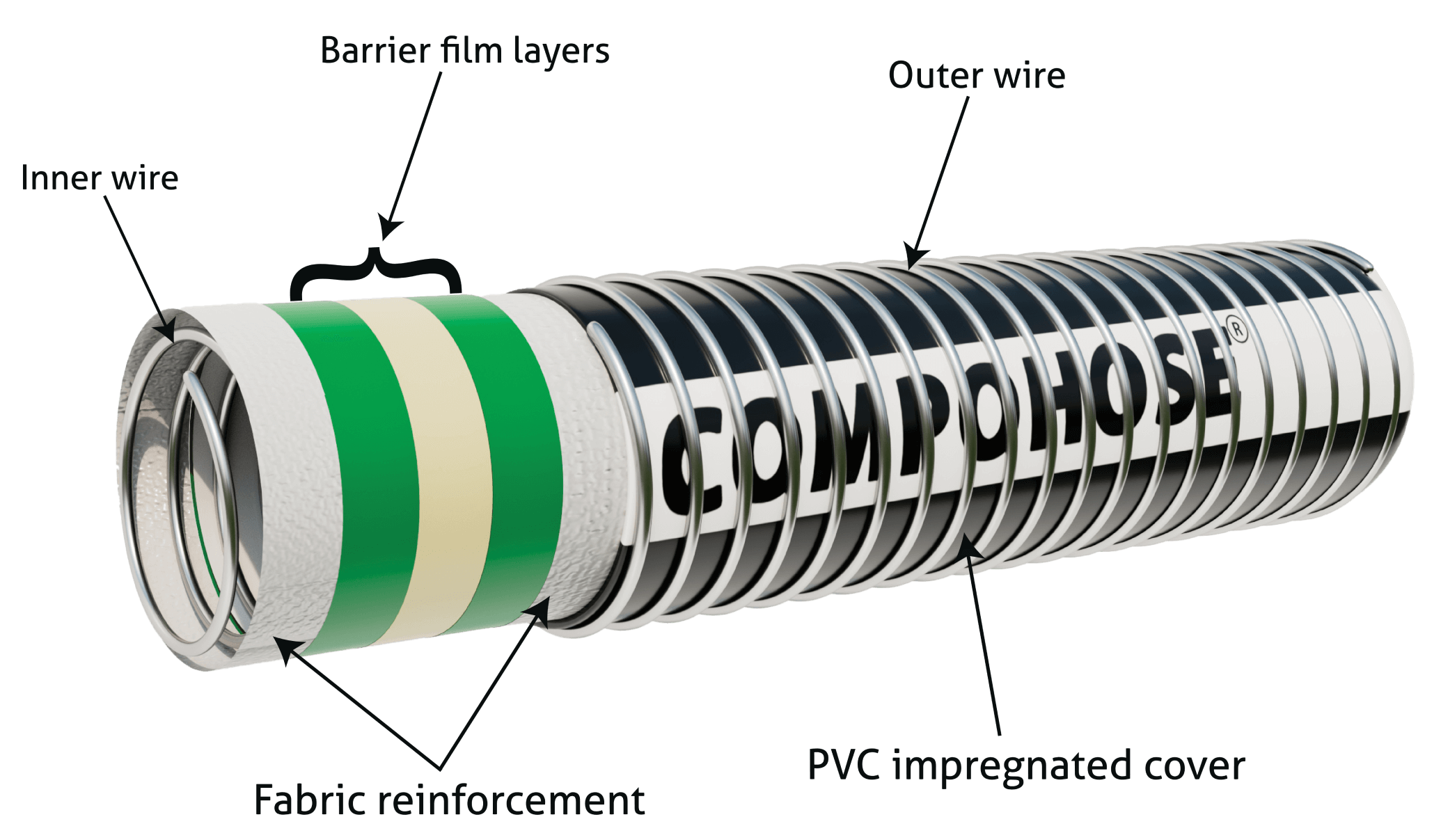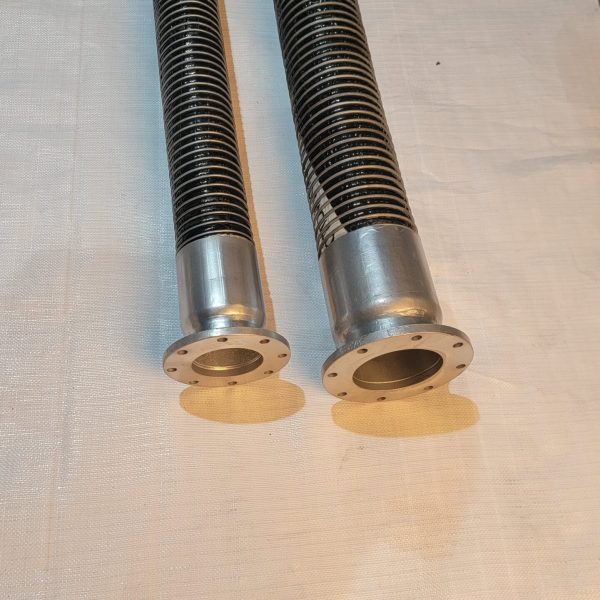Bottom Loading

Bottom loading composite hoses represent a cutting-edge solution for the safe and efficient transfer of a wide range of liquids, making them a cornerstone in various industrial and commercial applications. The term “bottom loading” refers to the method of filling or unloading tanks or containers from the bottom, which offers several advantages, including reduced spillage, improved safety, and increased efficiency. Bottom loading composite hoses are uniquely designed to facilitate this process, making them a preferred choice in industries where rapid, secure, and environmentally responsible fluid transfer is paramount.
Compliance : Bottom Loading liquid Transfer hoses are manufactured in accordance to EN 13765 / 2018 Type 3



Construction
- Hose Type - GPG, SPS
- Inner wire - Galvanised Steel / Stainless Steel 304, 316
- Inner Lining - Multiple layers of polypropylene fabric, film and polyester barrier layers
- Outer wire - Galvanised Steel / Stainless Steel 304, 316
- Cover - Abrasion-resistant PVC impregnated fabric
- End fitting - As per client requirements, crimped along with TTMA Flanges
Features
- Tough PVC outer cover resists dragging, wearing, abrasion, UV and ozone resistance ensures maximum durability and safety.
- Choice of Galvanised, Stainless Steel or Polypropylene coated outer wire can be provided.
- Suitable for 0.9 Bar Vacuum rating.
- Working Pressure 15 Bar (200 PSI)
- Safety factor 4:1 as per EN 13765 / 2018 (can be achieved higher if required)
- Temperature Range for this hose is -30° C to +100° C (-22° F to +212° F)
Applications
Bottom loading composite hoses play a crucial role in various applications associated with bottom loading arms, particularly in the production refinery and bulk distribution industries. These hoses are considered the optimal choice for handling lightweight distillates, encompassing a range of fluids such as gasoline, aromatics, MTBE (Methyl Tertiary Butyl Ether), MEK (Methyl Ethyl Ketone), and similar substances. The applications of bottom loading hoses in bottom loading arms are diverse and essential for efficient and safe operations.
Specification Table:
| CODE | SIZE | MEAN OD | MAX W.P | MIN BURST | BEND RADIUS | WEIGHT (KG) | MAX LENGTH | |||||
| NAME | MM | INCH | MM | BAR | PSI | BAR | PSI | MM | INCH | GG & SG | MT | FT |
| B02GG75 | 75 | 3” | 90 | 15 | 215 | 60 | 860 | 350 | 14 | 5.00 | 30 | 100 |
| B02GG100 | 100 | 4” | 121 | 15 | 215 | 60 | 860 | 400 | 16 | 7.90 | 30 | 100 |
*Higher burst pressure can be achieved on special request
Safety Standards
Rigorous Safety Testing
COMPOHOSE assemblies undergo comprehensive testing, conducted at 1.5 times the rated Working Pressure (W.P). This stringent testing adheres to the EN 13765 standard, ensuring a paramount level of safety and reliability.
Provision of Manufacturer's Test Certificate
With each supply of COMPOHOSE composite hose assemblies, a Manufacturer's Test Certificate is included. This certificate serves as a confirmation of the product's quality and compliance with safety standards, providing added assurance to users.
Clear Burst Pressure Specification
The burst pressure of the composite hose is explicitly indicated for ambient temperature conditions. This vital information enhances safety awareness and empowers users to operate within secure pressure limits.
Effective Electrical Continuity
The composite hose's electrical continuity is assured through the integration of two bonded wires connected to the end fitting. This innovative design promotes the dissipation of accumulated electrical charges, mitigating the risk of static flashes and associated hazards.



